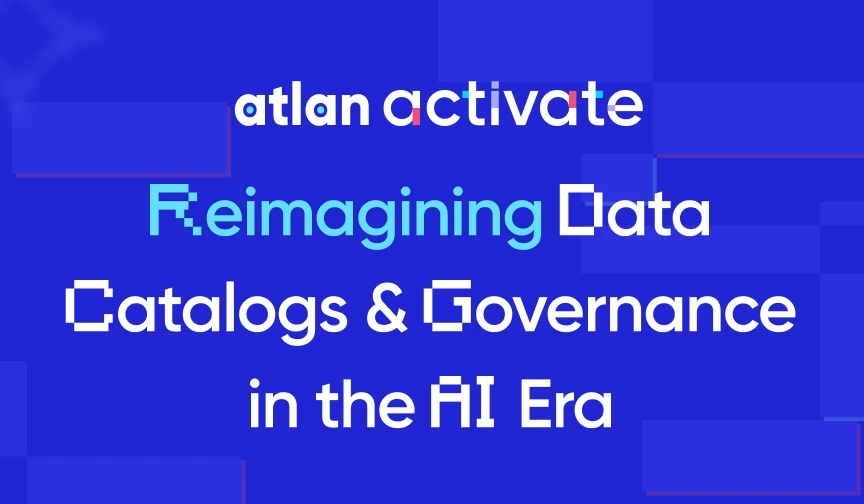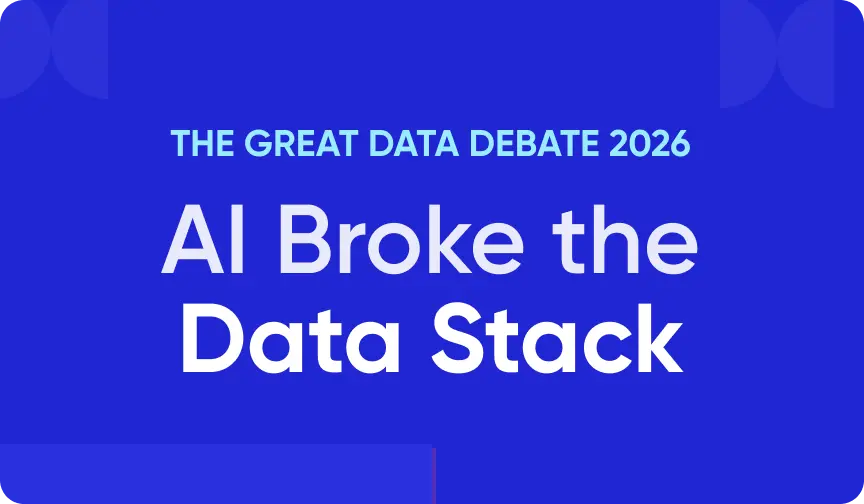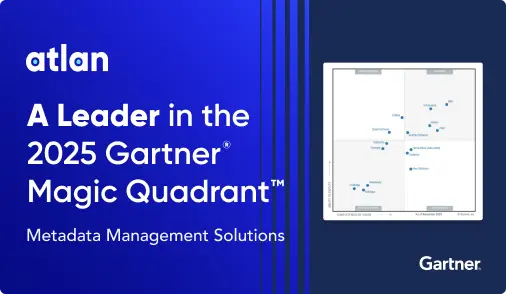Top 7 Open Source ETL Tools to Consider in 2025
Share this article
Open source ETL tools play a crucial role in data management. They facilitate the extraction, transformation, and loading of data from various sources. These tools are often more affordable and customizable than their proprietary counterparts.
Businesses can improve their data integration processes by adopting open source ETL solutions.
See How Atlan Simplifies Data Governance – Start Product Tour
Choosing any data engineering tool is hard in itself. Choosing an ETL tool is even more difficult as the importance of the decision is paramount, as the ETL tool is the one that binds your different data sources and targets into a coherent and functional system.
Most ETL solutions had traditionally been commercial enterprise solutions, so there were no viable alternatives for startups and companies built on open-source technologies.
Table of contents
Permalink to “Table of contents”- Popular open-source ETL tools
- A comparative evaluation of open-source ETL tools
- 1. Singer
- 2. Airbyte
- 3. dbt
- 4. PipelineWise
- 5. Meltano
- 6. Talend Open Studio for data integration
- 7. Pentaho Data Integration
- How organizations making the most out of their data using Atlan
- Conclusion
- FAQs about Open Source ETL Tools
- Related reads on open-source ETL tools
- Related deep dives on popular data tools
Here are 7 popular open-source ETL tools
Permalink to “Here are 7 popular open-source ETL tools”In the article, we will evaluate and compare the 7 most popular open-source ETL tools based on: Key features, data integration capabilities, architecture, support/community, documentation, and product updates.
- Singer
- Airbyte
- dbt
- PipelineWise
- Meltano
- Talend Open Studio For Data Integration
- Pentaho Data Integration
A comparative evaluation of open-source ETL tools
Permalink to “A comparative evaluation of open-source ETL tools”The earliest successful, limited open-source ETL tools that are still around are Pentaho Kettle and Talend Open Studio for Data Integration. The breakthrough in ETL came with Stitch open-sourcing their tap and target plugin-based ETL tool called Singer. Other tools like Airbyte and dbt were also developed in the same timeframe and have seen tremendous adoption, especially in new data engineering projects. Let’s look deeper into the list.
1. Singer
Permalink to “1. Singer”Singer overview
Permalink to “Singer overview”As mentioned above, Singer was the first open-source ETL tool to attempt the problem of data integration at scale. Singer was first launched in the first quarter of 2017 and proved to be of great interest to engineers and business users alike. Singer has since been an inspiration to other tools like Wise’s PipelineWise and GitLab’s Meltano.
Singer ETL features
Permalink to “Singer ETL features”Singer first came up with the idea of a tap and target-based architecture, where you can understand taps as being the producers of data, and you can understand the targets as being the consumers of data. Taps and targets were designed to be pluggable components, which you could configure based on the tools and technologies you were using for your business. Tap and target-based architecture also allow you to reduce failure points by loading data into multiple targets, especially in a multi-cloud or hybrid-cloud infrastructure.
Singer resources
Permalink to “Singer resources”Hundreds of users trust singer’s enterprise solution. The same is true for the open-source option.
Documentation | Slack | Roadmap
2. Airbyte
Permalink to “2. Airbyte”Airbyte overview
Permalink to “Airbyte overview”Inspired by Singer, but fundamentally quite a lot different from it, Airbyte boasts of being better in many respects. Starting with the standardization of the codebase for taps and targets, Airbyte offers centralized ownership of the code, which makes the codebase more reliable, the roadmap a lot more predictable, and the community support much smoother.
Airbyte ETL features
Permalink to “Airbyte ETL features”Airbyte was launched in the second quarter of 2020. It has seen widespread popularity with thousands of users within the first year and a half. Many of the great things from Singer, such as extensibility, and flexibility are central to Airbyte’s design. On top of that, one of the major innovations Airbyte has brought is to separate the transformation step from the extract and load steps. This enables Airbyte to integrate with tools like dbt that specialize in data transformation.
Airbyte resources
Permalink to “Airbyte resources”Airbyte has also brought the concept of Reverse ETL to the forefront after promising this feature on its official roadmap. Reverse ETL is increasingly becoming more important for businesses as it will help justify the huge costs of running ETL operations to populate data warehouses. Reverse ETL will enable the data in the data warehouses to be fed back to the operational systems, actively helping business insights and business operations.
Roadmap | Discourse | Documentation
3. dbt
Permalink to “3. dbt”dbt overview
Permalink to “dbt overview”Started as a project at RJMetrics in 2016 to extend the transformation capabilities of Singer by StitchData, dbt was open-source from the beginning. Another company called Fishtown Analytics took the core codebase and created their product. Since then, dbt has seen widespread adoption because of its ease of use and its ability to do SQL-based transformations very effectively by harnessing the power of the Jinja2 templating engine.
dbt ETL features
Permalink to “dbt ETL features”dbt is easily integrated with any orchestration tool like Prefect or Airflow and also works well with any basic Extract and Load tool that wants to offload the transformation workload to another tool. dbt, like many other data engineering tools of the day, relies more on the command-line and less on the UI. dbt is extremely lightweight; you can run it on your local by installing it using Homebrew, installing it using pip, or running it in a Docker container.
dbt resources
Permalink to “dbt resources”Recently, the long-awaited dbt Core v1.0.0 was released after getting contributions in over 5000 commits from over 200 engineers. Needless to say that dbt has an active and vibrant community. There are many YouTube tutorials and blog posts to learn and know about dbt, but there’s also a well-directed effort from dbt Labs to create useful courses and tutorials for new learners. Learn more about dbt’s roadmap on the official blog.
Discourse | Slack | Documentation
4. PipelineWise
Permalink to “4. PipelineWise”PipelineWise overview
Permalink to “PipelineWise overview”Initially developed at Wise (formerly known as TransferWise), PipelineWise was open-sourced in the third quarter of 2019. After the engineers at Wise considered many ways to solve the data integration problem at scale, they looked at the Singer.io specification. They chose to extend it rather than going for an enterprise solution or building a solution of their own from scratch.
PipelineWise ETL features
Permalink to “PipelineWise ETL features”Instead of Singer.io’s JSON configuration, PipelineWise went for version-controlled YAML-based configuration files. Additional features include the out-of-the-box capability to obfuscate sensitive data to comply with data privacy and security regulations such as GDPR. Moreover, advanced replication features, such as streams selection, logging, etc., have been added by Wise.
PipelineWise resources
Permalink to “PipelineWise resources”Documentation | GitHub Issues | Singer Slack
5. Meltano
Permalink to “5. Meltano”Meltano overview
Permalink to “Meltano overview”Started as an in-house open-source project at GitLab in 2018, Meltano was created from a fresh perspective using the principles of DevOps to enable businesses to derive the most value from their data at every point of the data lifecycle. Meltano, like PipelineWise, is based on the Singer specification. After the initial success, Meltano was created as a separate company towards the end of the second quarter of 2021.
Meltano ETL features
Permalink to “Meltano ETL features”Compared to other open-source ETL tools, Meltano stands much closer to Airbyte. Meltano, like Airbyte, allows you to offload transformation workloads to a tool like dbt and orchestration workloads to a tool like Airflow. Meltano also enables you to deploy your ETL tool using Docker, fulfilling its three main promises of providing you with an efficient solution for — data integration, orchestration, and containerization.
Meltano community & resources
Permalink to “Meltano community & resources”If we talk about the Singer specification, Meltano has taken it to the next level. Meltano’s Singer Working Group comprises of the leading Singer.io contributors, including the teams from Wise and StitchData (now a part of Talend). The core focus of this group is to figure out ways to improve Singer by adding features and making performance enhancements while also making sure that the Singer community is active.
Roadmap | Documentation | Slack
6. Talend Open Studio for data integration
Permalink to “6. Talend Open Studio for data integration”Talend Open Studio for data integration overview
Permalink to “Talend Open Studio for data integration overview”Talend Open Studio for Data Integration is one of the most popular ETL tools. It has seen a shrinking adoption in the last few years, which is one of the reasons that Talend decided to buy StitchData. Talend Open Studio was first launched in the year 2006. After quickly becoming one of the forces to be reckoned with, TOS DI was competing with Informatica PowerCenter, IBM DataStage, and others.
Talend Open Studio for data Integration features
Permalink to “Talend Open Studio for data Integration features”While many of today’s ETL tools focus on solving a specific step of the ETL pipeline, Talend solves it all by having advanced ETL, orchestration, data privacy, security features built-in. dbt, for instance, solves specifically for the transformation step of the ETL; Airflow focuses on handling orchestration well. Many tools like Airbyte and Meltano are built to integrate with other tools rather than solve it all by themselves.
Talend Open Studio for data Integration resources
Permalink to “Talend Open Studio for data Integration resources”The ETL tool comprises two separate GitHub repositories — Common Code across Talend Products and TOS DI. Although these repositories are actively maintained on GitHub, there’s a slight lack of centralized documentation on what’s going on with the development of the product. Other than that, Talend is a very sophisticated ETL tool full of advanced data integration features.
7. Pentaho Data Integration
Permalink to “7. Pentaho Data Integration”Pentaho Data Integration overview
Permalink to “Pentaho Data Integration overview”Pentaho Data Integration (formerly known as Pentaho Kettle) was also developed around the same time as TOS DI. Architecturally and stylistically, Pentaho Kettle is pretty close to TOS DI; however, it is not as feature-rich. After consistent success, especially with enterprise users, Pentaho was acquired by Hitachi back in 2015.
Since the acquisition, the Pentaho suite has been in active development for in-house and commercial usage with a host of closed-source and open-source components of the suite.
How organizations making the most out of their data using Atlan
Permalink to “How organizations making the most out of their data using Atlan”The recently published Forrester Wave report compared all the major enterprise data catalogs and positioned Atlan as the market leader ahead of all others. The comparison was based on 24 different aspects of cataloging, broadly across the following three criteria:
- Automatic cataloging of the entire technology, data, and AI ecosystem
- Enabling the data ecosystem AI and automation first
- Prioritizing data democratization and self-service
These criteria made Atlan the ideal choice for a major audio content platform, where the data ecosystem was centered around Snowflake. The platform sought a “one-stop shop for governance and discovery,” and Atlan played a crucial role in ensuring their data was “understandable, reliable, high-quality, and discoverable.”
For another organization, Aliaxis, which also uses Snowflake as their core data platform, Atlan served as “a bridge” between various tools and technologies across the data ecosystem. With its organization-wide business glossary, Atlan became the go-to platform for finding, accessing, and using data. It also significantly reduced the time spent by data engineers and analysts on pipeline debugging and troubleshooting.
A key goal of Atlan is to help organizations maximize the use of their data for AI use cases. As generative AI capabilities have advanced in recent years, organizations can now do more with both structured and unstructured data—provided it is discoverable and trustworthy, or in other words, AI-ready.
Tide’s Story of GDPR Compliance: Embedding Privacy into Automated Processes
Permalink to “Tide’s Story of GDPR Compliance: Embedding Privacy into Automated Processes”- Tide, a UK-based digital bank with nearly 500,000 small business customers, sought to improve their compliance with GDPR’s Right to Erasure, commonly known as the “Right to be forgotten”.
- After adopting Atlan as their metadata platform, Tide’s data and legal teams collaborated to define personally identifiable information in order to propagate those definitions and tags across their data estate.
- Tide used Atlan Playbooks (rule-based bulk automations) to automatically identify, tag, and secure personal data, turning a 50-day manual process into mere hours of work.
Book your personalized demo today to find out how Atlan can help your organization in establishing and scaling data governance programs.
Conclusion
Permalink to “Conclusion”Deciding which ETL tool can be tricky irrespective of where you are in your data engineering journey. To get the most out of your ETL, make sure that you look at how well the ETL tool sits with the rest of your stack, how much it costs to operate, and how much engineering expertise it requires to deploy, maintain, and develop for.
FAQs about Open Source ETL Tools
Permalink to “FAQs about Open Source ETL Tools”1. Which open-source ETL tool is best?
Permalink to “1. Which open-source ETL tool is best?”The best open-source ETL tool depends on your specific needs. Popular options include Airbyte, Singer, and Talend Open Studio. Each tool has unique features that cater to different data integration requirements.
2. Is ETL outdated?
Permalink to “2. Is ETL outdated?”ETL is not outdated; however, it has evolved. Many organizations now use ELT (Extract, Load, Transform) processes, especially with the rise of cloud data warehouses. ETL remains relevant for specific use cases.
3. Is Apache NiFi an ETL tool?
Permalink to “3. Is Apache NiFi an ETL tool?”Yes, Apache NiFi is an open-source ETL tool. It supports data flow automation and provides a user-friendly interface for managing data pipelines, making it suitable for various data integration tasks.
4. Can Python be used for ETL?
Permalink to “4. Can Python be used for ETL?”Yes, Python is widely used for ETL processes. Libraries like Pandas and Apache Airflow allow developers to create custom ETL workflows, making Python a flexible choice for data integration.
5. What features should I look for in an open source ETL tool?
Permalink to “5. What features should I look for in an open source ETL tool?”Key features to consider include data integration capabilities, ease of use, community support, documentation, and compatibility with your existing data stack.
Related reads on open-source ETL tools:
Permalink to “Related reads on open-source ETL tools:”- ETL vs. ELT: Exploring definitions, origins, strengths, and weaknesses
- Top 5 ETL tools to consider in 2025
- What is reverse ETL and how does it enhance the modern data stack?
- Data transformation: Definition, processes, and use cases
- Data Orchestration vs ETL: 7 Core Differences Explained
- Data Governance in Action: Community-Centered and Personalized
- Data Governance Tools: Importance, Key Capabilities, Trends, and Deployment Options
- Data Governance Tools Comparison: How to Select the Best
- Data Governance Tools Cost: What’s The Actual Price?
- Data Governance Process: Why Your Business Can’t Succeed Without It
- Data Governance and Compliance: Act of Checks & Balances
- Data Compliance Management: Concept, Components, Getting Started
- Data Governance for AI: Challenges & Best Practices
- A Guide to Gartner Data Governance Research: Market Guides, Hype Cycles, and Peer Reviews
- Gartner Data Governance Maturity Model: What It Is, How It Works
- Data Governance Maturity Model: A Roadmap to Optimizing Your Data Initiatives and Driving Business Value
- Data Governance vs Data Compliance: Nah, They Aren’t The Same!
- Data Governance in Banking: Benefits, Implementation, Challenges, and Best Practices
- Open Source Data Governance - 7 Best Tools to Consider in 2025
- Federated Data Governance: Principles, Benefits, Setup
- Data Governance Committee 101: When Do You Need One?
- Data Governance for Healthcare: Challenges, Benefits, Core Capabilities, and Implementation
- Data Governance in Hospitality: Challenges, Benefits, Core Capabilities, and Implementation
- 10 Steps to Achieve HIPAA Compliance With Data Governance
- Snowflake Data Governance — Features, Frameworks & Best practices
- Data Governance Roles and Responsibilities: A Round-Up
- Data Governance Policy: Examples, Templates & How to Write One
- Data Governance Framework: Examples, Template & How to Create one?
- 7 Best Practices for Data Governance to Follow in 2025
- Benefits of Data Governance: 4 Ways It Helps Build Great Data Teams
- Key Objectives of Data Governance: How Should You Think About Them?
- The 3 Principles of Data Governance: Pillars of a Modern Data Culture
Share this article























